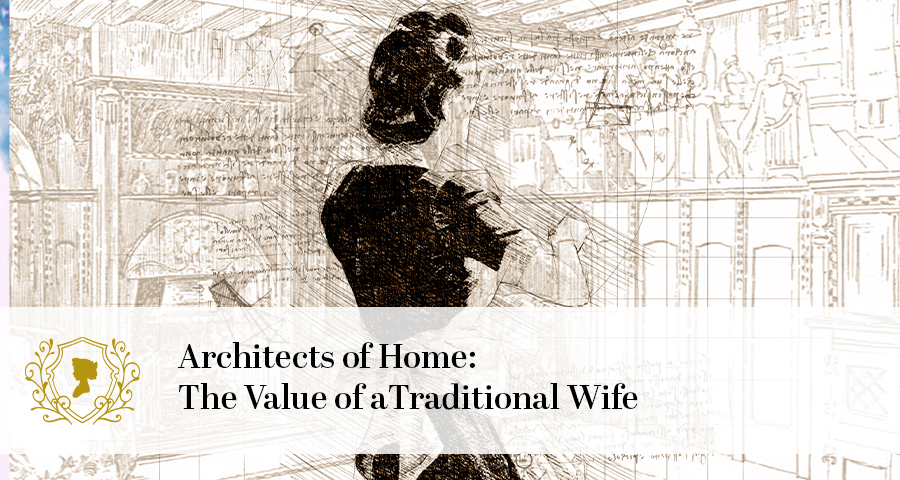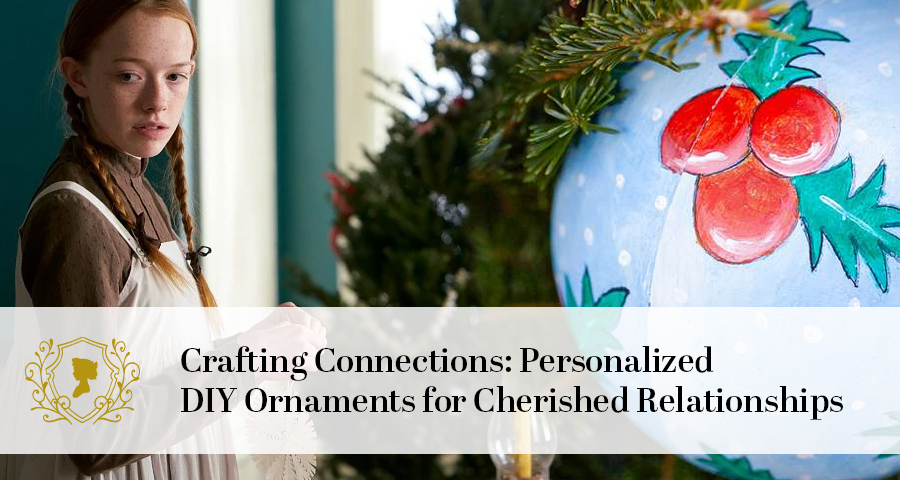
Click play to listen to the intro.
Introducing Alice from The Brady Bunch, a household queen who has mastered the art of cleaning and organization. Her wealth of knowledge and experience in maintaining a pristine home will be shared through Alice’s essential cleaning hacks that are guaranteed to transform your living space. From tackling tough stains to keeping clutter at bay, Alice’s tips are both practical and innovative, offering new perspectives on how to handle even the most challenging cleaning tasks.
Throughout her years as the housekeeper for the Brady family, Alice honed her skills and developed countless ingenious cleaning techniques that have been passed down through generations. With her keen eye for detail and unwavering dedication to cleanliness, she has become an iconic figure in the world of household management. Now, readers will have the opportunity to tap into Alice’s expertise and learn firsthand how to revolutionize their approach to maintaining a spotless and organized home. Stay tuned as we delve into each of Alice’s essential cleaning hacks—your journey toward a cleaner, more enjoyable living environment starts here!
In the Kitchen & Bathroom
- Dealing with Grease on cabinet and ceiling around stove – Dealing with grease on cabinets, walls and ceilings around the stove can be a daunting task, but it doesn’t have to be a never-ending battle.
- Vinegar and water: One effective method is to use a mixture of equal parts vinegar and water to cut through the grease. Simply apply the solution to the affected areas, let it sit for a few minutes, and then wipe clean with a microfiber cloth. This natural solution not only removes grease but also leaves behind a fresh, clean scent.
- Baking soda: Utilizing baking soda as a gentle abrasive cleaner can work wonders in tackling stubborn grease build-up. Sprinkle baking soda onto the greasy surfaces, spray with water or vinegar to create a paste, and then scrub using a sponge or cloth. The mild abrasiveness of baking soda helps to dislodge grease without damaging the surfaces.
- Steam-Clean Your Microwave: Not only does it make the cleaning process easier and more efficient, but it also helps to eliminate stubborn odors and grease buildup that can affect the flavor of your food. To steam-clean your microwave, simply place a bowl of water with a few drops of lemon juice or vinegar inside and heat it for several minutes until the steam fills the interior. The trapped steam will soften any dried-on food splatters or stains, making them easy to wipe away with a damp cloth.
- Cleaning Stainless steel with out streaks – When it comes to cleaning stainless steel without streaks, many people struggle with finding the right method. However, fear not, as I have discovered a game-changing technique that will leave your stainless steel appliances sparkling and streak-free.
- Microfiber cloth dampened: The key is to use a microfiber cloth dampened with a mixture of white vinegar and water. This gentle yet effective solution not only removes fingerprints and smudges but also leaves behind a streak-free shine.
- Wipe in the direction of the grain: This simple technique helps prevent streaking and ensures an even finish across the entire surface.
- Using less cleaning solution: Using a minimal amount of cleaning solution and ensuring thorough drying can also help eliminate pesky streaks.
- Use vacuums on cabinets and baseboards and anything you can: Keeping your cabinets and baseboards clean is often overlooked but can make a significant impact on the overall cleanliness of your home. Using vacuums to remove dust, dirt, and pet hair from these surfaces makes a huge difference in the appearance of you home.
Cabinets, baseboards and other surfaces like lampshades, upholstery, and even electronics can be vacuumed. Dust and dirt tend to accumulate on these surfaces, and using a vacuum is an efficient way to get rid of it. - Easy clean old grease spills in oven – Let’s face it, old grease spills in the oven are a pain to clean. But fear not, because I have a simple and effective solution for you!
- Baking soda water paste: Start by mixing baking soda with water to form a paste, then spread it over the greasy areas in your oven. Let it sit for at least 30 minutes to an hour to allow the baking soda to work its magic on the stubborn grease. Once time is up, grab a damp sponge or cloth and scrub away the grime.
- Vinegar as a natural degreaser: Simply spray undiluted white vinegar onto the greasy spots and let it sit for about 15-20 minutes before wiping it clean with a cloth or sponge. The acidity of the vinegar helps break down the grease, making it easier to remove.
- Struggling to get Pots out – One of the most frustrating things in the kitchen is having to rummage through cabinets to find the pots and pans you use most often. To solve this, Alice from The Brady Bunch suggests keeping a clean bin in your kitchen designated for these frequently used items. Not only does this keep your kitchen organized, but it also saves time and reduces stress when cooking. By having an easily accessible place for your go-to cookware, you’ll streamline meal preparation and keep you cabinets organized.
- Use bins to organize spice cabinet: In organizing your kitchen, it’s important to keep the most commonly used spices within easy reach. Using bins to corral these frequently reached-for items can make a huge difference in keeping them in order. By grouping similar spices together in designated bins, you not only create a visually appealing arrangement, but also streamline the cooking process by minimizing the time spent searching for specific ingredients. Additionally, bins offer a practical solution for keeping small spice containers from getting lost or pushed to the back of cluttered cabinets.
- Keep less appliances on the counter: Keeping fewer appliances on the counter can dramatically transform your kitchen’s look and feel. Not only does it create a sense of spaciousness, but it also simplifies the cleaning process. By reducing clutter, you can make your kitchen more inviting and efficient. Consider storing appliances that are not used daily in cabinets or drawers to maintain a clean and organized appearance.
Additionally, having fewer appliances on the counter allows for easier maintenance and reduces the risk of dust accumulation. This minimalist approach doesn’t just enhance the aesthetic appeal of your kitchen; it also encourages a more functional and streamlined cooking experience. Try to prioritize which appliances are essential for everyday use, and then consider stowing away the rest to achieve a cleaner and tidier countertop. - Clean stove while your cooking: In the midst of preparing a delicious meal, it’s easy to let spills and splatters accumulate on your stove. Alice from The Brady Bunch would tell you, cleaning while cooking can save you time and effort in the long run. A quick wipe with a damp cloth between stirring or sautéing can prevent stubborn stains from forming. Not only does this keep your stove looking pristine, but it also ensures that any accidental grease or food residue doesn’t become a hardened mess.
- Clean pots immediately after using: Maintaining clean pots and pans can make kitchen maintenance a breeze. One important cleaning hack is to wash pots immediately after using them. Letting food residue sit on the surface can make it harder to clean later, which can be time-consuming and frustrating. By cleaning your pots right after use, you not only save yourself the hassle of scrubbing stubborn stains but also ensure that your cookware lasts longer.
Washing pots immediately helps prevent the spread of bacteria and germs that thrive in leftover food residues. An unclean pot can become a breeding ground for harmful microorganisms if left unattended for an extended period. By adopting the habit of immediate cleaning, you’re not just maintaining cleanliness; you’re also promoting good hygiene practices in your kitchen. - Rust stains in pots, sink and other surfaces: Dealing with stubborn rust stains on pots, sinks, and other surfaces can be an unwelcome chore, but fear not – there are effective solutions at your fingertips.
- For pots and pans, try creating a paste using equal parts baking soda and water to scrub away the rust; for sinks and metal surfaces, a mixture of lemon juice and salt can work wonders. Additionally, consider investing in a rust removal product specifically formulated for different materials to tackle the issue head-on.
- To preventing rust stains ensure metal surfaces are completely dry and ensure all pots are dried before stacking them. Even a small amount of moisture can lead to rust formation, so take the time to dry each pot thoroughly with a towel before putting it away. Additionally, consider using paper towels or dishcloths between stacked pots to absorb any lingering moisture and create a protective barrier against potential rust.
- Avoid storing acidic foods in metal pots for extended periods of time. Acids can react with the metal and accelerate the formation of rust. Instead, transfer leftovers to glass or plastic containers for storage, and use non-reactive cookware such as stainless steel or enamel-coated pots when cooking acidic dishes.
- Debris on kitchen floor: As Alice from The Brady Bunch can attest, keeping the kitchen clean is a never-ending battle. One of the most common sources of frustration in the kitchen is debris on the floor. No matter how diligently we sweep and mop, crumbs always seem to find their way back onto the floor. However, a simple tip from Alice herself can make this task more manageable:
- Placing a doormat at the entrance of the kitchen can significantly reduce the amount of dirt and debris that gets tracked in from other parts of the house.
- Additionally placing a mat below your prep and wash areas can effectively catch food scraps and spills before they spread across the floor.
- Removing Grim in grout: Are you tired of seeing those stubborn grimy spots in your grout? Don’t worry, because Alice from The Brady Bunch has got you covered with her essential cleaning hacks.
- Baking soda and hydrogen peroxide: use a mixture of baking soda and hydrogen peroxide to create a powerful grout cleaner. This natural solution not only removes grim but also disinfects the grout, leaving it sparkling clean.
- Another ingenious tip from Alice is to use a steam cleaner to tackle grimy grout. Steam cleaners are a great way to lift dirt and grime without the need for harsh chemicals. Plus, they can reach into the tiny crevices of the grout lines, ensuring a thorough cleaning. By following these expert tips from Alice, you’ll be saying goodbye to grim in your grout in no time!
- Dealing with water stains in toilet: Dealing with water stains in the toilet can be a persistent frustration, but fear not! There are several effective methods to tackle this common household issue.
- White vinegar and baking soda: simply pour the vinegar into the toilet bowl, add a generous amount of baking soda, and let it sit for a few hours before scrubbing with a toilet brush. Another option is to utilize lemon juice and borax powder – mix these two ingredients together to form a paste, apply it to the stained areas, and allow it to work its magic for an hour before scrubbing.
- Automatic toilet bowl cleaner: investing in an automatic toilet bowl cleaner can help prevent water stains from accumulating in the first place. By regularly using these cleaning products, you can stay one step ahead of stubborn water stains. Remember that consistent maintenance is key when it comes to keeping your toilet sparkling clean. With these handy tips and tricks at your disposal, you’ll never have to feel defeated by water stains again!
- Soap scum in showers: mixing baking soda and vinegar into a paste can create a non-toxic scouring agent that is perfect for tackling soap scum in showers or stubborn grime on kitchen surfaces. With these natural cleaning powerhouses at your disposal, maintaining a sparkling clean home has never been easier or more environmentally friendly.

Livingroom and & Bedrooms
- Remove Wine Stains from Carpet: Removing wine stains from carpet can be a daunting task, but with the right approach, it’s definitely achievable.
- Start by blotting the stain with a clean cloth to absorb as much of the liquid as possible. Then, mix a solution of water and dish soap and apply it to the stained area, gently scrubbing with a soft-bristled brush. Avoid using colored towels or paper towels that may transfer dye onto the carpet.
- For stubborn wine stains, consider using a mixture of hydrogen peroxide and dish soap. Test this solution in an inconspicuous area first to ensure it won’t damage the carpet fibers. Once applied, let it sit for a few minutes before blotting with a clean cloth. It’s important to avoid rubbing the stain vigorously, as this could spread it further into the carpet fibers. With these tips and some patience, you can say goodbye to those pesky wine stains and restore your carpet to its former glory!
- Pet Fur: When it comes to pet fur, the struggle is real. No matter how much we love our furry friends, dealing with their shedding can be a constant battle.
- Rubber squeegee: One clever hack that Alice finds effective is using a rubber squeegee to remove pet hair from carpets and furniture. The rubber bristles are perfect for grabbing onto the fur and lifting it away, leaving surfaces clean and fur-free.
- Damp sponge or microfiber cloth: Another handy tip is to use a damp sponge or microfiber cloth to gently wipe down upholstery or clothing covered in pet fur. The moisture helps to attract the hair and keep it from flying around, making it easier to gather up and dispose of. It’s amazing how such simple tools can make a big difference in managing pet fur around the house.
- Dealing with Pet urine: Pet urine can be a stubborn and unpleasant mess to deal with, but there are effective cleaning hacks that can make the task easier.
- Baking soda and vinegar: Sprinkle baking soda over the affected area and then pour vinegar on top. The resulting fizzing action helps break down the uric acid in the urine, making it easier to clean.
- Hydrogen peroxide and dish soap: Use a combination of hydrogen peroxide and dish soap to create a homemade pet stain remover. This powerful solution not only removes the stain but also eliminates odors, leaving your home smelling fresh and clean.
- Act Fast: It’s important to address pet urine stains as soon as possible to prevent them from setting in and becoming more difficult to remove. Enzymatic cleaners are particularly useful in this regard, as they break down the proteins in the urine that cause odor and discoloration, effectively eradicating any trace of the accident.
- Deep Cleaning regularly to remove scents: Incorporating regular deep cleaning into your pet care routine can help prevent future accidents by removing lingering scents that may attract pets back to previously soiled areas.
- Baking soda and vinegar: Baking soda and vinegar may seem like a simple combination, but when it comes to cleaning, they can work wonders.
- Baking soda’s gentle abrasiveness makes it an effective scrubbing agent, while its alkaline nature helps to neutralize acidic odors. Meanwhile, vinegar’s acidic properties make it great for cutting through grease and grime, while also acting as a natural disinfectant. Together, these two ingredients create a powerful cleaning duo that can tackle tough stains on a variety of surfaces, including carpets and upholstery.
- Deodorizing carpets: One of the most underrated uses of baking soda and vinegar is in deodorizing carpets. Simply sprinkle baking soda over the carpet, let it sit for 15-20 minutes, then mist with diluted vinegar before blotting away the stains and odors.
- Get a cute Closed Basket or Storage Chair: Tired of seeing your daily outfits lying around, waiting to be put away? The solution: a cute closed basket or storage chair. These handy items not only keep your space tidy, they also add a touch of style to your room. It’s the perfect way to create an atmosphere of calm and order in the midst of life’s daily chaos.
Plus, it makes finding that favorite sweater you tossed aside much easier! It’s an excellent way to streamline your routine and prevent those small items from piling up in various corners of your living space. Plus, if you opt for a stylish or decorative basket, it can add visual appeal to your room while serving as a functional storage solution.

Laundry Hacks from Alice
Alice knows a thing or two about tackling the never-ending laundry pile. Her laundry hacks are not just life-saving but also game-changing. One of her go-to tricks is using white vinegar as a natural fabric softener. Not only does it leave clothes feeling soft and fresh, but it also helps to remove stubborn odors, making it an essential laundry staple.
Alice swears by the power of sorting clothes before washing them. By separating whites, darks, and colors beforehand, she ensures that no accidental color runs ruin her family’s favorite outfits. Additionally, Alice believes in the magic of pre-treating stains with dish soap. This simple yet effective hack has saved many garments from permanent discoloration and set-in stains, proving that sometimes the best solutions are found in unexpected places!
Next time you’re doing laundry, consider making the switch to this dynamic cleaning duo for fresher, longer-lasting fabrics without compromising on comfort or cleanliness.
White Vinegar Instead of Fabric Softener
Fabric softeners have long been hailed as the ultimate solution for achieving ultra-soft, fresh-smelling laundry. However, it is important to realize that these products can actually have a counterproductive effect on your fabrics. Many fabric softeners contain oils and waxes that can actually leave behind a residue of oils on your favorite t-shirts and sheets. This oily deposit has the unfortunate tendency to attract dirt and grime, leading to those dreaded yellow stains under the pits of your white tees or that overall dingy appearance. It’s like a sneaky culprit hiding in plain sight, sabotaging the fresh look and feel of your fabrics. Alternatively replace fabric softener with vinegar.

Borax
There are more natural alternative that not only cuts down on potentially harmful chemicals but also helps extend the lifespan of your linens by preventing oil buildup over time. Borax and vinegar stand out as a powerful duo that cleans and deodorizes clothes without leaving any unwanted residue. Especially when it comes to linens like sheets. In fact, Hotels use this very combination to keep their linens crisp and fresh.
Start by mixing half a cup of borax to your washing machine along with your regular detergent. This will help boost the cleaning power without causing any damage to your fabrics. Then replace fabric softener with half a cup of vinegar.
DO NOT Mix BORAX and Bleach or Clorox
As a cleaning enthusiast, Alice from The Brady Bunch swears by her essential cleaning hacks, but she advises against using Borax and bleach together. While both are powerful cleaners on their own, combining them can create a hazardous chemical reaction. Borax, also known as sodium borate, is an alkaline mineral salt that can enhance the cleaning power of laundry detergent and dish soap.
On the other hand, bleach is a strong oxidizing agent commonly used for disinfecting and whitening fabrics. However, when these two substances are mixed together, they can produce toxic fumes and even cause chemical burns if they come into contact with the skin.
Instead of risking a dangerous chemical reaction by mixing Borax with bleach, it’s best to use each cleaner separately and according to their specific directions. Since Borax is an excellent stain remover and deodorizer for carpets and upholstery while bleach is great for whitening clothes and disinfecting surfaces, utilizing them individually will ensure effective cleaning without putting your health at risk. Always remember to follow safety precautions when handling any cleaning products to maintain a clean yet safe home environment for you and your family.
Alices Pre-treating Laundry Stains:
- Mix equal parts of white vinegar and water, apply it to the stain before washing.
- Use a pre-treat spray or gel on stubborn stains and let it sit for at least 10 minutes before washing.
- For grease stains, sprinkle baby powder on the affected area and brush off excess powder before laundering.
- Dawn dish soap can also be used as a pre-treatment for oily or greasy stains. Simply apply a small amount of Dawn dish soap directly onto the stain, rub it in gently, and let it sit for a few minutes before washing.
Stain Removal Hacks:
- To remove ink or marker stains from clothes, soak the affected area in rubbing alcohol for about 10 minutes. Then, launder as usual.
- For grass stains, mix equal parts hydrogen peroxide and liquid dish soap to create a paste. Apply this paste to the stain and let it sit for at least 30 minutes before laundering.
- To tackle tough wine stains, pour boiling water directly onto the stained fabric from a height of about one foot. This can help loosen and remove some of the staining agents before washing.
- If you have rust stains on your clothing, try making a paste with lemon juice and salt. Apply this mixture to the stain and let it sit in direct sunlight until dry.
- Club soda: The carbonation in club soda helps to lift fresh stains from fabrics, making it a go-to for spills like red wine or coffee. Blotting a fresh stain with club soda can help lift the color and prevent it from setting.
- Rubbing alcohol can effectively remove ink stains from clothing when applied directly to the affected area.
- Soak bloodstained fabrics in cold water with salt before washing to help break down the proteins in the blood.
- Lemon juice: The acidic properties of lemon juice make it effective for removing stains and brightening whites when mixed with water.
Life Changing Tools of the Trade
Using Borax and Vinegar
In the quest for a sparkling clean home, few ingredients have garnered as much attention as borax and vinegar. These two powerhouse cleaners are not only affordable and eco-friendly but also incredibly versatile in their applications.
Borax, with its natural disinfectant properties, is perfect for tackling tough stains and eliminating odor-causing bacteria. Pairing it with vinegar creates a potent cleaning solution that can cut through grease, soap scum, and mineral deposits like a charm. The magic happens when these two ingredients come together to create a dynamic cleaning duo. Combining borax and vinegar forms an effective paste for scrubbing grout lines or removing stubborn rust stains from metal surfaces. Individually, they have their strengths, but together they unleash a cleaning synergy that leaves your home spotless without the need for harsh chemicals. And let’s not forget the added bonus of saving money by using these simple yet powerful cleaners!

Disposable reusable rags
In our quest for more sustainable cleaning practices, disposable reusable rags have emerged as a game-changer. These versatile and eco-friendly alternatives to traditional paper towels offer the convenience of disposability without the environmental guilt. By choosing reusable rags made from durable materials like microfiber or bamboo, we not only reduce waste but also save money in the long run.
One of the most compelling aspects of disposable reusable rags is their versatility. From wiping down surfaces to tackling tough spills, these handy cloths prove to be indispensable in any household. Furthermore, these rags can easily be washed and reused multiple times, making them a practical and sustainable choice for everyday cleaning needs. As Alice from The Brady Bunch would attest, incorporating disposable reusable rags into your cleaning routine can elevate efficiency while minimizing your ecological footprint.
O-Cedar ProMist MAX Microfiber Spray Mop
Let’s talk about the O-Cedar ProMist MAX Microfiber Spray Mop, a true champion for anyone looking to streamline their cleaning routine. This versatile tool is an essential addition to your cleaning arsenal, as it offers the perfect combination of convenience and efficiency. This mop gives Swiffer a run for their money. The innovative microfiber pad effortlessly traps dirt and grime, delivering a superior clean with minimal effort – perfect for busy individuals like Alice from The Brady Bunch. Plus, since the pad is reusable, you can simply toss it in the washing machine after each use, reducing waste and saving money on disposable pads unlike with Swiffer mops.
Not only does this mop make cleaning a breeze, it also boasts a refillable bottle that can be filled with your preferred cleaning solution. No need to purchase expensive refills. What Swiffer offers that? With just a simple press of the trigger located on the handle, you can dispense a fine mist directly onto your floors before effortlessly gliding over them with the mop. This eliminates the need for heavy buckets or messy mops while still achieving sparkling clean results. And as Alice knows all too well, having a reliable cleaning tool like the O-Cedar ProMist MAX means more time to focus on what really matters – creating memories with loved ones in a sparkling clean home.

Cordless Canister Vacuums
When it comes to keeping your home clean and tidy, a cordless canister vacuum is an invaluable tool. Unlike traditional upright vacuums, cordless canister vacuums offer the freedom to move around without being tethered to a power outlet. This makes it much easier to clean hard-to-reach areas such as under furniture, on stairs, and in tight corners.
Additionally, the compact design of cordless canister vacuums makes them easy to store and maneuver, making cleaning less of a chore. But the benefits of a cordless canister vacuum extend far beyond just its cleaning prowess. The freedom from cords allows for quick and easy clean-up without the hassle of finding an available power outlet or untangling cables. Whether you’re tackling a small mess or giving your entire home a deep clean, these vacuums provide exceptional flexibility. Plus your saving on filters with the canister vacuum’s dust collection system. With a cordless canister vacuum, you no longer have to worry about replacing or cleaning filters on a regular basis, saving you time and money in the long run. No more dragging heavy machinery around.

Conclusion
In conclusion, cleaning doesn’t have to be a daunting task. The essential cleaning hacks from Alice from The Brady Bunch show us that with the right techniques and mindset, keeping a clean and organized home can be attainable for anyone. From using vinegar to tackle tough stains to repurposing everyday items for innovative cleaning solutions, Alice’s tips remind us that creativity and resourcefulness are key ingredients in effective cleaning.
As we conclude our exploration of these essential cleaning hacks, it’s important to recognize the impact of a clean environment on our well-being. A tidy space not only enhances physical health by reducing allergens and bacteria but also contributes to mental clarity and relaxation. By incorporating these hacks into our cleaning routine, we can transform the chore of tidying up into an opportunity for self-care and rejuvenation. So let’s embrace Alice’s wisdom, get creative with our approach to cleaning, and reap the benefits of a sparkling, serene living space.



















